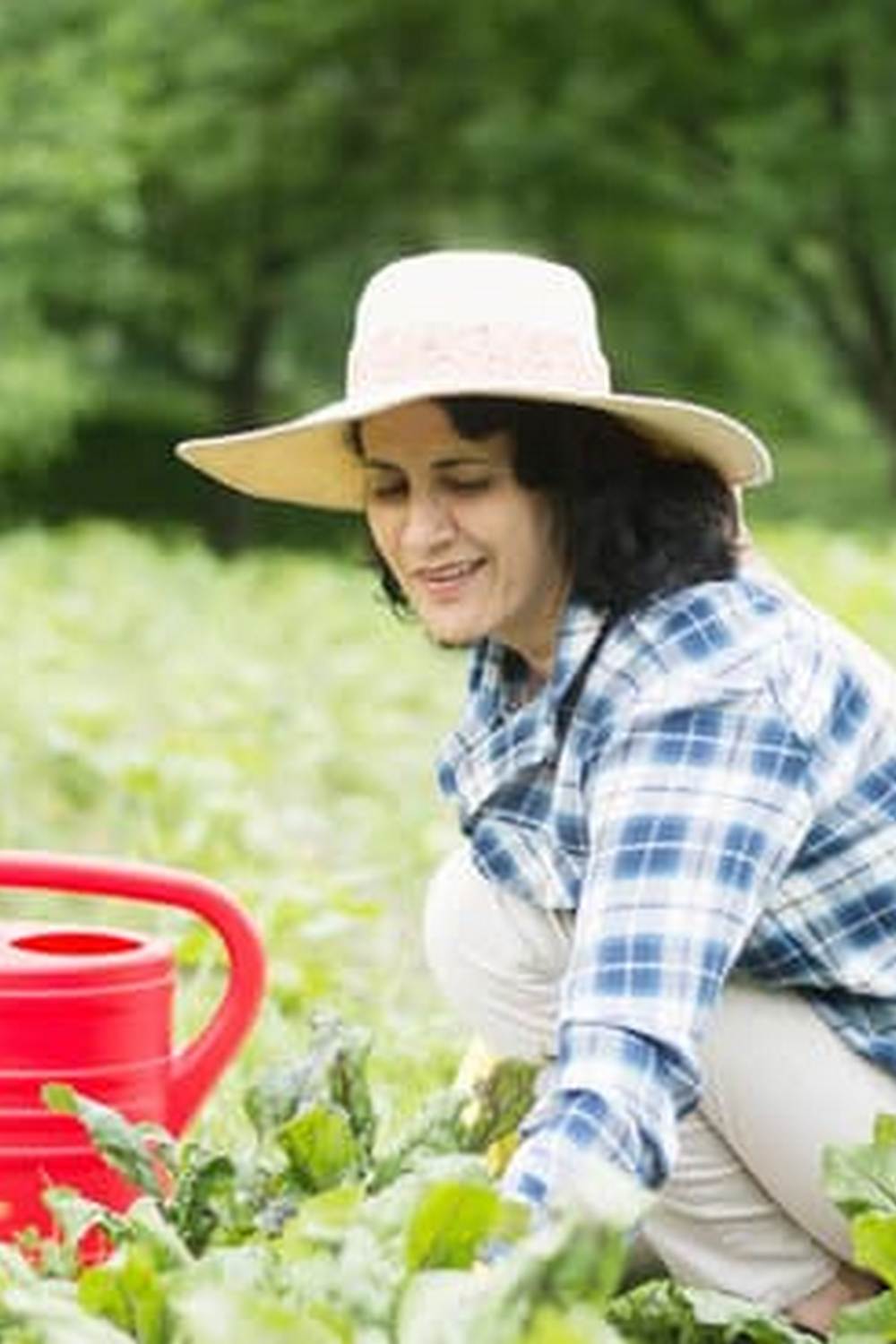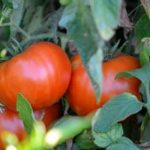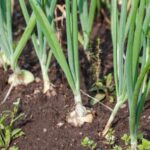Container gardening vegetables and flowers has become increasingly popular among urban dwellers and those with limited outdoor space. This method allows individuals to cultivate a variety of vegetables and flowers in pots, hanging baskets, and other containers, providing a convenient and flexible way to enjoy the benefits of gardening.
With container gardening, enthusiasts can easily bring the beauty of nature into their homes, patios, or balconies while also reaping the rewards of growing their own fresh produce. In this article, we will explore the multitude of benefits that container gardening offers for both vegetables and flowers, as well as provide valuable tips and information for successful cultivation.
Whether you’re an experienced gardener or just starting out, learning about container gardening can open up a world of possibilities for growing your favorite plants in a limited space. From choosing the right containers to selecting the best vegetables and flowers for container gardens, this introductory section will introduce you to the myriad advantages that come with container gardening. Join us on this journey as we delve into the art of cultivating vibrant and bountiful container gardens.
Choosing the Right Containers for Your Garden
When it comes to container gardening vegetables and flowers, choosing the right containers is essential for the success of your garden. The type and size of the containers you choose can have a significant impact on the growth and health of your plants.
One important factor to consider when choosing containers for your garden is drainage. Good drainage is crucial for preventing waterlogged soil, which can lead to root rot and other issues. Look for containers with drainage holes at the bottom, or be prepared to drill your own if necessary. Additionally, consider the material of the container. While plastic and fiberglass are lightweight and retain moisture well, clay and ceramic pots are more breathable but also heavier.
The size of the container is another important consideration. Larger containers allow for more soil volume, which means better root development and less frequent watering. Small containers, on the other hand, are best suited for small plants or herbs that don’t require much space for roots to grow. Consider the mature size of the plants you intend to grow and choose appropriately sized containers.
| Container Type | Advantages |
|---|---|
| Terra Cotta Pots | Breathable material allows air circulation |
| Plastic Containers | Lightweight and retain moisture well |
| Fabric Grow Bags | Good drainage and air circulation |
When choosing containers for your vegetable and flower garden, keep in mind that different plants have different needs. Some may require deeper pots while others thrive in shallow ones. By understanding these needs, you can provide an optimal environment for each plant in your container garden.
Selecting the Best Vegetables for Container Gardening
When it comes to container gardening vegetables and flowers, choosing the right vegetables for your garden is crucial for a successful and bountiful harvest. Not all vegetables are well-suited for growing in containers, so it’s important to carefully select those that thrive in small spaces. Here are some of the best vegetables to consider for your container garden:
1. Tomatoes: Tomatoes are one of the most popular vegetables to grow in containers due to their versatility and ability to thrive in small spaces. They can be grown in hanging baskets, pots, or even grow bags, making them perfect for urban gardens or limited outdoor space.
2. Peppers: Bell peppers, chili peppers, and other varieties of peppers are also great choices for container gardening. They require little maintenance and can add a pop of color and flavor to your garden.
3. Leafy Greens: Vegetables like lettuce, spinach, kale, and Swiss chard are ideal for container gardening as they have shallow root systems and can be easily grown in pots or window boxes.
4. Green Onions: Also known as scallions, green onions are a low-maintenance vegetable that can be grown in small containers on balconies or windowsills.
5. Cucumbers: Compact bush varieties of cucumbers are well-suited for container gardening and can produce an abundant crop when given the proper support.
By choosing the right vegetables for your container garden, you can enjoy a variety of fresh produce regardless of limited outdoor space. With proper care and attention to their specific growing needs, these vegetables will thrive in containers and provide you with a rewarding harvest.
Choosing the Right Flowers for Container Gardens
When choosing the right flowers for your container garden, it’s important to consider factors such as the size of the containers, the amount of sunlight they will receive, and their water needs. Here are some popular flowers that are well-suited for container gardening:
- Petunias: These colorful flowers come in a variety of shades and are known for their long blooming period. They do well in both hanging baskets and larger containers.
- Marigolds: With their bright orange and yellow blooms, marigolds are an attractive addition to any container garden. They are also known for repelling pests, making them a great choice for pest control in your garden.
- Geraniums: Geraniums are easy to grow and come in a variety of colors. They thrive in containers and can tolerate dry conditions, making them perfect for those who may forget to water their plants occasionally.
In addition to these popular choices, other options for container gardening flowers include pansies, impatiens, and snapdragons. When selecting your flowers, it’s important to choose varieties that will complement each other in terms of height and color.
Remember to consider the growing conditions specific to your location when choosing which flowers to plant in your container garden; some flowers may thrive better than others based on climate and temperature. By carefully considering these factors when choosing your flowers, you can create a beautiful and thriving container garden that adds beauty and color to your outdoor space.
Tips for Successful Container Gardening
When it comes to container gardening vegetables and flowers, there are several key tips to keep in mind to ensure a successful harvest and beautiful blooms. One important tip is to choose the right size containers for your plants. Larger plants, like tomatoes and peppers, will need larger containers, while smaller herbs can thrive in smaller pots. Additionally, it’s crucial to select containers with adequate drainage holes to prevent waterlogged soil, which can lead to root rot.
Another essential tip for successful container gardening is to use high-quality potting mix specifically formulated for container plants. This type of soil is lightweight, drains well, and provides the necessary nutrients that your vegetables and flowers need to thrive in a contained environment.
Furthermore, regular watering is crucial for container gardens since they can dry out faster than traditional garden beds. It’s important to check the moisture levels in your containers daily and adjust your watering schedule as needed.
Lastly, proper placement of your containers is key for successful gardening. Most vegetables need at least 6-8 hours of sunlight per day, so be sure to position your containers in a sunny location. Also, consider the weight of your containers when deciding on their placement – larger pots filled with soil and plants can be heavy, so it’s best to place them where they will ultimately stay.
| Container Gardening Tip | Detail |
|---|---|
| Choose the right size containers | Larger plants need larger containers with adequate drainage holes |
| Use high-quality potting mix | Select a lightweight soil that provides necessary nutrients |
| Proper placement | Ensure containers receive at least 6-8 hours of sunlight per day and consider their weight when positioning them |
Essential Tools and Supplies for Container Gardening
Quality Containers
When choosing containers for your vegetable and flower garden, it’s important to select ones that are durable, have good drainage, and are the right size for the plant you want to grow. Plastic, ceramic, and wooden containers are all popular choices for container gardening. Make sure they have drainage holes at the bottom to prevent waterlogged soil.
Potting Mix
The type of potting mix you use can greatly impact the success of your container garden. Look for a high-quality, well-draining potting mix specifically designed for container gardening vegetables and flowers. Avoid using regular garden soil in your containers, as it tends to be too dense and can lead to root rot.
Watering Can or Hose
Proper watering is crucial for the health of your container garden. Invest in a good watering can or hose with a nozzle attachment to ensure that you can easily and accurately water your plants without causing damage.
Fertilizer
Plants grown in containers often need more frequent feeding than those grown in the ground. Choose a fertilizer specifically formulated for vegetables and flowers in container gardens, and follow the instructions on the packaging for best results.
Hand Trowel or Gardening Gloves
Having a hand trowel or a pair of gardening gloves on hand can make planting and maintaining your container garden much easier and more comfortable. Use these tools when transplanting seedlings, removing weeds, or simply rearranging plants.
With the right tools and supplies at your disposal, you’ll be well-equipped to start your own successful container garden full of beautiful flowers and delicious vegetables.
Managing Pests and Diseases in Container Gardens
Pests and diseases can be a major concern for container gardening vegetables and flowers, but with the right strategies, you can effectively manage these issues and keep your plants healthy.
Preventing Pests
One of the best ways to manage pests in your container garden is to prevent them from becoming a problem in the first place. Before planting, make sure to inspect your plants for any signs of pests or diseases. Keep an eye out for chewed leaves, holes in the foliage, or any discoloration that could indicate a problem. Additionally, consider using natural pest repellents such as neem oil or introducing beneficial insects like ladybugs to help keep pests at bay.
Controlling Diseases
Diseases can easily spread in container gardens, so it’s important to take steps to control them. Start by choosing disease-resistant varieties of vegetables and flowers whenever possible.
Proper watering is also crucial for preventing diseases – always water at the base of the plant to keep foliage dry and reduce the risk of fungal infections. If you do notice any signs of disease, such as moldy spots or wilting leaves, act quickly by removing affected plants and disposing of them properly to prevent further spread.
Organic Pest and Disease Control
When dealing with pests and diseases in container gardening vegetables and flowers, many gardeners prefer to use organic methods of control. There are several options available such as natural insecticidal soaps, diatomaceous earth, and homemade remedies using ingredients like garlic and chili peppers. By using organic solutions, you can effectively manage pests and diseases while minimizing harm to beneficial insects and the environment.
By implementing these strategies for managing pests and diseases in your container garden, you can help ensure that your vegetables and flowers thrive throughout the growing season. With proper prevention techniques and prompt action when issues arise, you’ll be well on your way to enjoying a bountiful harvest from your beautiful container garden.
Creative Ideas for Designing a Container Garden
Creating a visually appealing container garden can be just as enjoyable as watching the fruits of your labor grow. With a little creativity, you can design a container garden that not only provides a bountiful harvest but also enhances the beauty of your outdoor space. Here are some creative ideas for designing a container garden that combines vegetables and flowers.
One way to add visual interest to your container garden is by incorporating different levels. Consider using a combination of tall, medium, and low-growing plants to create depth and dimension in your containers.
For example, you can plant tomatoes or peppers as the tallest plants in the center of the container, surround them with herbs or flowering annuals of medium height, and finally border the edge with trailing flowers or vines. This layering effect not only adds aesthetic appeal but also maximizes space in your container.
Another creative idea for designing a container garden is to incorporate unique and unexpected containers. Instead of traditional pots, consider using repurposed items such as old barrels, toolboxes, or even old tires for planting vegetables and flowers. These unconventional containers add character and charm to your garden while also reducing waste by giving new life to discarded items.
In addition to thinking outside the box with containers, consider using color and texture effectively in your design. Pairing complementary colors or contrasting textures can create an eye-catching display in your container garden. For example, you might pair the vibrant hues of marigolds with the lush green foliage of lettuce or kale for a striking combination that pleases both the eye and the palate.
Implementing these creative ideas for designing a container garden will not only make your gardening experience more enjoyable but will also result in a beautiful and productive space filled with an abundance of vegetables and flowers. By incorporating different levels, using unique containers, and playing with color and texture, you can create a visually stunning display that brings joy and satisfaction to both novice and experienced gardeners alike who are passionate about container gardening vegetables and flowers.
Harvesting and Caring for Your Container Garden
Once you have successfully planted and cared for your container gardening vegetables and flowers, the time will come to reap the rewards of your hard work. When it comes to harvesting, it is important to remember that different vegetables and flowers have varying optimal times for picking.
Some vegetables like tomatoes, peppers, and cucumbers should be harvested when they are fully ripe, while others like lettuce and spinach can be picked as soon as they reach a desirable size. Similarly, flowers such as petunias and geraniums should be deadheaded regularly to promote new growth and maintain a tidy appearance.
In addition to harvesting, proper care of your container garden is key to ensuring its longevity. Regular watering is crucial for maintaining healthy plants, especially in hot weather when containers tend to dry out quickly.
Fertilizing on a regular basis will also help replenish the nutrients in the potting soil that are used up by the plants over time. Pruning and trimming back overgrown or damaged foliage will not only improve the appearance of your container garden but also encourage new growth.
Moreover, keeping an eye out for pests and diseases is essential in caring for your container garden. Common pests such as aphids, spider mites, and whiteflies can wreak havoc on your plants if left unchecked. Using natural remedies or insecticidal soaps can help control these unwanted visitors without harming the environment or beneficial insects.
Additionally, being vigilant about fungal infections and other plant diseases can save your container garden from devastation. Regular inspection of leaves and stems for any signs of disease is a good practice to adopt in order to catch any issues early on before they spread further. By properly caring for your container garden after harvesting, you can ensure its continued health and productivity throughout the growing season.
Conclusion
In conclusion, container gardening offers a range of benefits for those looking to cultivate their own vegetables and flowers. Not only does it provide flexibility, accessibility, and the ability to control environmental conditions, but it also allows individuals with limited outdoor space to still indulge in their passion for gardening. By carefully selecting the right containers, appropriate plants, and implementing proper care and maintenance techniques, anyone can transform their outdoor or indoor space into a flourishing garden.
When considering container gardening vegetables and flowers, it’s important to keep in mind the various tips and tricks that can lead to successful harvests. From selecting the best vegetables and flowers for container gardens to managing pests and diseases that may affect your plants, being proactive in caring for your garden will ensure a bountiful supply of fresh produce and beautiful blooms.
Additionally, by experimenting with creative design ideas for your containers, you can personalize your garden to reflect your unique style and taste.
As you begin enjoying the fruits of your labor in container gardening, take time to savor the satisfaction of tending to your plants from seedlings or bulbs all the way through to harvest. Whether you’re growing basil for homemade pesto or cultivating vibrant marigolds for a pop of color on your patio, container gardening allows individuals to reconnect with nature while reaping the rewards of their efforts.
So go ahead – give container gardening a try and experience the joy of nurturing life right outside your door.
Frequently Asked Questions
Can You Grow Vegetables and Flowers in the Same Container?
Yes, it is possible to grow vegetables and flowers in the same container. This is known as companion planting, where certain plants benefit each other when grown together. For example, marigolds can help repel pests for vegetables.
What Are the Best Vegetables for Container Gardening?
The best vegetables for container gardening are those that don’t require a lot of space to grow, such as tomatoes, peppers, lettuce, green beans, and herbs like basil and parsley. These veggies thrive in containers and can provide a bountiful harvest.
What Vegetables Grow Well Together in a Container?
Some vegetables that grow well together in a container include tomatoes and basil, which complement each other both in the garden and in the kitchen; carrots and radishes, as their different root depths prevent them from competing for nutrients; and peppers and onions, which can be grown together while deterring pests.
Companion planting like this promotes healthy growth for both types of vegetables.

If you’re looking to get into vegetable gardening, or are just looking for some tips on how to make your current garden better, then you’ve come to the right place! My name is Ethel and I have been gardening for years. In this blog, I’m going to share with you some of my best tips on how to create a successful vegetable garden.





